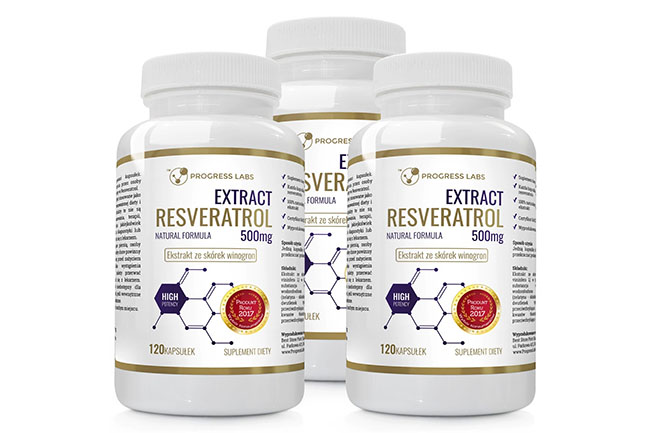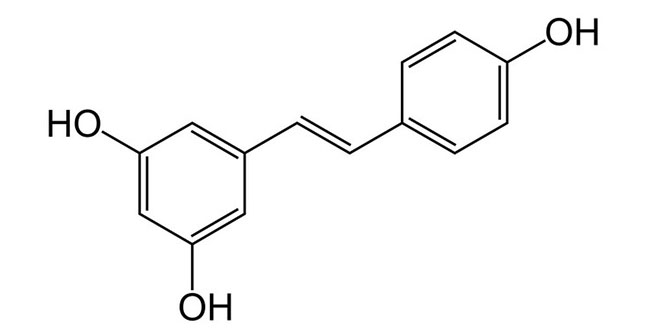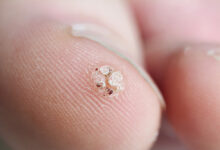Earning such beautiful and high-profile titles as the king of antioxidants, the shield of the brain, the elixir of youth, the nectar of the gods, the youth molecule, the secret weapon of modern cosmeceuticals and many others, resveratrol is.
Since 1939, when the Japanese scientist Michio Takoka first isolated it from the poisonous medicinal plant, hellebore, resveratrol has been a constant subject of scientific debate. Research is conducted annually by scientists confirming and then refuting the beneficial properties that it possesses. It even has its own godfather — the biologist David Sinclair, who has dedicated his life entirely to its study. So, what exactly is it — a capsule of eternal youth or another empty promise with exaggerated marketing hype?
What is it?

Resveratrol is a natural phytoalexin, a stilbene (an aromatic hydrocarbon, diarylethylene), a bioflavonoid, and a polyphenol. It is produced by some plants as a defense mechanism against parasites (bacteria, fungi) and ultraviolet radiation.
Its scientific name is trans-3,5,4’-trihydroxystilbene. In some sources, the alternative spelling of the term ‘resveratrol’ can be found. It has its own designation in the INCI classification (the international nomenclature of cosmetic ingredients): Resveratrol.
It is produced in plants and wine extracts at factories through fermentation.
Physical and chemical properties:
- in its pure form, it is a powder
- color — all shades of brown, most often — cocoa
- characteristic smell — strong and tart, with a musky note
- it dissolves in ethanol and water, but not completely.
In nature, it exists in two forms:
- Cis-resveratrol (Z) — has a pronounced antioxidant effect and can affect genetic transcription.
- Trans-resveratrol (E) — has greater biological activity and is characterized by a pronounced anti-inflammatory effect; it affects cancer cells.
Most research is conducted with trans-resveratrol. It is this form that is included in the bulk of dietary supplements.
It is an organic substance with a branched chemical formula. Therefore, it is difficult to break down the composition into any components. Manufacturers of dietary supplements add all kinds of plant extracts, vitamins, and other bioactive ingredients to enhance its effectiveness.
Chemical formula: C14H12O3.
Structural formula:

It is available as a dietary supplement with antioxidant, cardioprotective, anti-diabetic, and tonic properties. It is also produced by some sports nutrition brands as a fat burner that helps increase the effectiveness of training and muscle building. The main form of release is capsules and tablets.
Research
Starting in the mid-90s of the 20th century, it became the constant subject of all kinds of research. This is due to the work of David Andrew Sinclair, a well-known Australian biologist, professor of genetics, and currently a professor at Harvard University. In 1995, he received his doctorate in molecular genetics and focused on the study of the “elixir of longevity” (this is how the scientist calls this phytoalexin in most of his works and interviews).
Most of the research has focused on the antitumor properties of resveratrol, since an effective cure for cancer has not yet been found. Many scientists (not just Sinclair) believed that it would become a real breakthrough in this area. Another aspect that is constantly being analyzed is its ability to slow down the aging process and prolong life.
A brief history of the research and its results is as follows:
- 1997
Prevents the formation of cancer cells in the skin of mice that were specially exposed to carcinogens.
- 2002
Reduces the number and size of tumors, prevents the development of stomach and rectal cancer in rats that were subjected to a special attack by carcinogens.
- 2003
Extends the life of yeast, nematodes, and fruit flies.
- 2006
Additional research on mice confirmed its anti-cancer properties.
The first study in humans. 10 volunteers were selected to conduct the experiment. As a result, the assumption that anti-tumor properties extend to the human body was refuted. This was explained by the low bioavailability.
A study on fish by Italian scientists showed an increase in overall activity and an improvement in learning ability.
Sinclair confirmed its ability to prolong life (experiments were conducted on mice).
- 2007
Prevents the formation of cancer cells in the skin that was specifically exposed to ultraviolet radiation. Slows the growth of Lewis carcinoma. However, it had no effect on melanoma, stomach tumors, or leukemia.
Another group of scientists checked the data from the 2003 study and refuted its results. An increase in life expectancy was not identified.
- 2011
Research on artificially created, synthetic cell models. An increase in apoptosis and a slowdown in tumor growth were observed.
Its inability to prolong life was confirmed once more.
- 2012
A scientific article by Japanese scientists was published stating that, based on resveratrol, a harmless drug can be developed that suppresses the Wnt signal (which triggers the growth of tumor cells) for the treatment of cancer.
- 2013
Maintains the normal functioning of brain neurons during aging.
As part of the anti-aging testing program of the National Institute on Aging, Sinclair’s experiment with mice (2006) was reproduced exactly. The ability to prolong life was not confirmed.
That same year, South Korean scientists published the results of studies on dogs: a positive effect



